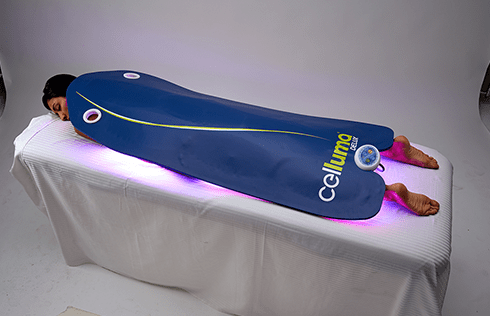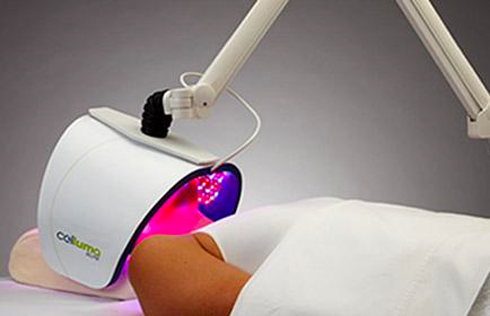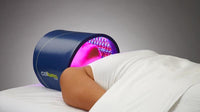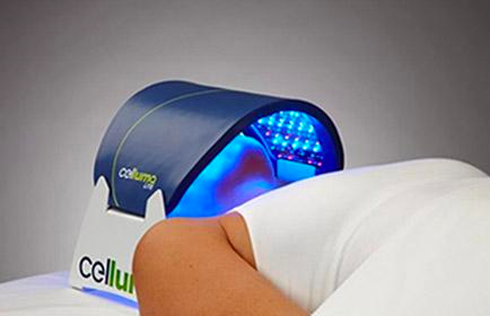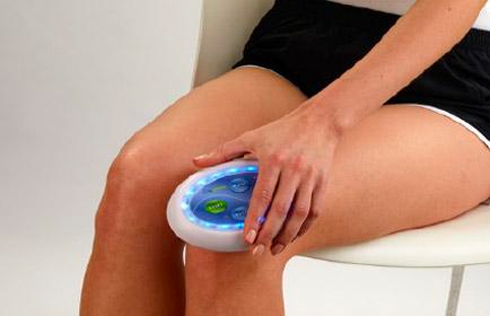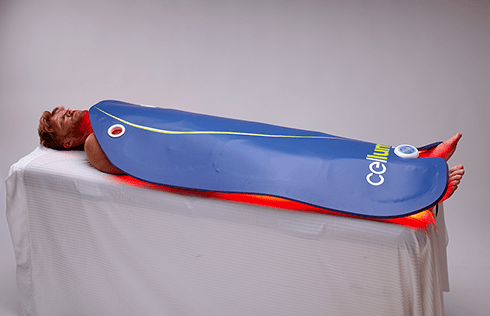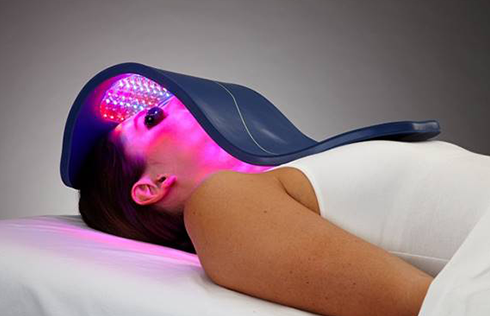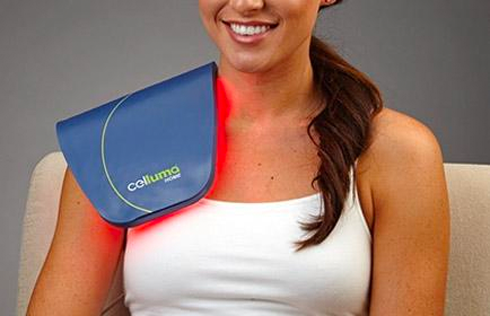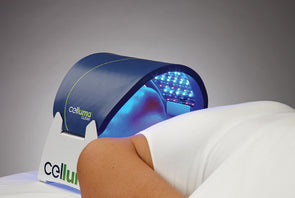Medical Grade Red Light Therapy Devices: Celluma

With so many red light therapy devices on the market, it can be difficult to understand the differences and know which one is going to get you the best results to meet your particular needs. Let’s look at a few of the most common questions about medical grade red light therapy.
Will Red Light Therapy Help with Pain?
Red light therapy has gained attention for its ability to provide pain relief. This non-invasive therapy exposes the body to low-level red light wavelengths that penetrate deep into the skin and surrounding tissue. It stimulates cellular energy production, reduces inflammation, improves circulation, and promotes tissue repair and healing.
How Often Should You Use Red Light Therapy for Pain?
The frequency of red light therapy sessions for pain management can vary depending on individual needs and the specific condition being treated. Generally, it is recommended to start with a series of sessions spaced closely together, such as three to five times per week, for a few weeks. Think of it like going to the gym. Once a month is better than never, but the more frequently you go, the better results you will get. The frequency can be gradually reduced to one or two sessions per week or as needed for ongoing pain management.
Which is Better, Red Light Therapy or Infrared?
When comparing red light therapy and infrared therapy, it’s important to understand their differences and intended uses. Red light therapy primarily utilizes visible red light wavelengths, typically in the range of 630 to 660 nanometers, which can penetrate skin up to 6-8mm. It focuses on stimulating cellular energy production, promoting tissue repair, and reducing inflammation.
Infrared therapy utilizes longer wavelengths, typically in the range of 810-950 nanometers, which can penetrate deeper into the body, reaching muscles, joints and even bone. For this reason, infrared therapy is often considered the “pain” wavelength for its ability to reach deeper tissue while improving circulation, relaxing muscles, and relieving pain. Both therapies have been shown to provide benefits in a variety of applications such as pain management, skin rejuvenation, and wound healing. The choice between red light therapy and infrared therapy depends on the specific condition being treated and the desired therapeutic effects.
FDA Clearance is Important
One of the most important things to look for first when examining medical grade red light therapy devices is whether it has been reviewed by the appropriate regulatory bodies such as the FDA, TUV, UL, CE, ISO or any other agency that regulates the manufacture of medical devices for safety and for efficacy.
There are literally hundreds of red light therapy devices on the market; just do a quick Internet search and you will likely be overwhelmed. If you have skin conditions such as acne, wrinkles, or other aging skin issues including hair loss, you need to know that the red light therapy device you are purchasing has been properly tested for efficacy and safety. Meaning it will get you the desired results.
Read the Fine Print
The same would be true if you are looking for a near infrared light therapy device to deal with pain issues throughout your body. You need to know that what you are purchasing has been vetted and will perform as advertised.
A Key Step in the Process
One of the first things that happens in achieving FDA clearance is what is called the 510(k) process. This process is typically used in reviewing Class II devices, like Celluma red light therapy devices. It is during this process that a device becomes “cleared” for commercialization.
There is a separate process for devices that would be considered Class III (an example would be a device that is implanted) which ultimately leads to FDA approval. (You can read more about this important difference in a blog here).
Safety First
As a skin care professional or home user dealing with acne, wrinkles, and other aging skin issues all over the body, do you wonder if FDA clearance really matters. Here’s why it should matter to you whether as a licensed professional or a private individual.
The FDA regulates any “medical claims” that are made by a device manufacturer. Before a near infrared light therapy device manufacturer can legally make any medical claims, those claims must be reviewed by the FDA for both safety as well as efficacy.
A Thorough Review
The FDA “clears” a device only after a rigorous, time-consuming, and expensive process. In pursuing FDA clearance, medical device manufacturers (like Celluma red light therapy) demonstrate to the public that they are committed to providing both safe and effective products.
Consumer Confidence

As a skin care professional, when you choose to purchase an FDA-cleared medical device, you can be confident that the appropriate regulation and authoritative oversight has been done.
FDA-clearance means your device has been confirmed to be efficacious and safe when used as directed. And this extends to each component of the device which must also pass inspection; including each of the sources, suppliers, and even component manufacturers.
No Oversight
If you see a red light therapy device (or any medical device for that matter) that hasn’t been through the FDA review process, then the device has not been held accountable to quality controls or manufacturing standards which could result in a product that might be considerably less effective or, even worse, less safe than an FDA-cleared device.
Global Influence
Around the world, the FDA is viewed as the leader in regulatory standards and regulations, monitoring, compliance, and guidance for the medical device industry. There is a great deal of harmonization between international and FDA standards and regulations.
The FDA’s responsibilities extend to all 50 states, the District of Columbia, Puerto Rico, Guam, the Virgin Islands, American Samoa, and other U.S. territories.
Less Risk for Your Skin Care Business
As a business owner and skin care professional whose success is based on your client’s satisfaction, using FDA-cleared devices ensures you have a red light therapy device that has been rigorously reviewed by the FDA for safety and efficacy.
For example, if you are looking to treat aging skin or body aches and pains, you want to know that your medical-grade red light therapy device has been reviewed and is confirmed to do exactly that, so you and your clients can expect positive treatment results.
Buy with Confidence

You can be confident that the results being claimed by the device manufacturer can be reproduced in your skin care practice.
Using FDA-cleared devices is also a great way to differentiate yourself from other practitioners and ensures your clients will leave your clinic with a greater sense of confidence in you and your professional choices.
Beware of False Advertising
If you see a medical-grade device claiming that it is an “FDA approved LED light therapy treatment” or a manufacturer tells you they sell “FDA approved LED Light Therapy Devices” they either don’t know what they are talking about or they are deliberately trying to mislead you.
As mentioned previously, light therapy devices are “cleared” by the FDA, not “approved.” So, buyer beware of false advertising because if a device is purported to be an FDA approved LED light therapy treatment, it likely has NOT been subjected to any FDA review because the FDA is very specific as to how reviewed devices can be legally advertised.
Credentials are Important

If the device does not have these credentials, then this should be a red flag to any licensed professional as well as home-user looking for a medical grade red light therapy device.
As the manufacturer of Celluma, a Class II medical device in the US, BioPhotas is registered and regulated by the FDA, ISO (International Standards Organization) and many other regulatory agencies.
Celluma is also medically CE-Marked as a Class IIa device in Europe, and was the first device of its kind to receive this status.
Quality You Can See
You really cannot compare a medical device like Celluma to the kinds of gadgets found on many online sites as it is not a true apples to apples comparison.
One obvious red flag to watch for is when the suggested treatment time for a red-light therapy device is short. For example, only three to five minutes duration. This defies the laws of bio-optical physics for all low-level light therapy devices.
Ask the Right Questions
Therefore, a good question to ask prior to purchasing is: may I see the scientific research that proves that this protocol is effective? Ask for the clinical research (which should be from a credible source, such as Harvard School of Medicine) to support the recommended short treatment sessions.
Treatment Time is Key
You may find that while there is no scientific research to support this shorter treatment time, there is excellent research to support longer treatment times.
Read on for excerpts from BIPHASIC DOSE RESPONSE IN LOW LEVEL LIGHT THERAPY which describes the many important factors required for light therapy to be effective (full study details noted below) including the relationship between dose, power and time.
Dose-Response, 7:358–383, 2009
Formerly Nonlinearity in Biology, Toxicology, and Medicine
Copyright © 2009 University of Massachusetts
ISSN: 1559-3258
DOI: 10.2203/dose-response.09-027.Hamblin
BIPHASIC DOSE RESPONSE IN LOW LEVEL LIGHT THERAPY
Ying-Ying Huang
Wellman Center for Photomedicine, Massachusetts General Hospital, Boston, MA; Department of Dermatology, Harvard Medical School, Boston, MA; Aesthetic and Plastic Center of Guangxi Medical University, Nanning, P.R. China
Aaron C.-H. Chen
Wellman Center for Photomedicine, Massachusetts General Hospital, Boston, MA; Boston University School of Medicine, Graduate Medical Sciences, Boston, MA
James D. Carroll
THOR Photomedicine Ltd, 18A East Street, hesham, HP5 1HQ, UK
Michael R. Hamblin
Wellman Center for Photomedicine, Massachusetts General Hospital, Boston, MA; Department of Dermatology, Harvard Medical School, Boston, MA; Harvard-MIT Division of Health Sciences and Technology, Cambridge, MA
According to this study, “A biphasic dose response has been frequently observed where low levels of light have a much better effect on stimulating and repairing tissues than higher levels of light. The so-called Arndt-Schulz curve is frequently used to describe this biphasic dose response. This review will cover the molecular and cellular mechanisms in LLLT, and describe some of our recent results in vitro and in vivo that provide scientific explanations for this biphasic dose response.
“Energy (J) or energy density (J/cm2) is often used as an important descriptor of LLLT dose, but this neglects the fact that energy has two components, power and time, Energy (J) = Power (W) × Time (s) and it has been demonstrated that there is not necessarily reciprocity between them; in other words, if the power doubled and the time is halved then the same energy is delivered but a different biological response is often observed.
“The first law of photobiology states that for low power visible light to have any effect on a living biological system, the photons must be absorbed by electronic absorption bands belonging to some molecular photoacceptors, or chromophores.”
2.2. Action Spectrum and Tissue Optics
“One important consideration should involve the optical properties of tissue. There is a so-called ‘optical window’ in tissue, where the effective tissue penetration of light is maximized. This optical window runs approximately from 650 nm to 1200 nm. (Figure 2). The absorption and scattering of light in tissue are both much higher in the blue region of the spectrum than the red, because the principle tissue chromophores (hemoglobin and melanin) have high absorption bands at shorter wavelengths, tissue scattering of light is higher at shorter wavelengths, and furthermore water strongly absorbs infrared light at wavelengths greater than 1100-nm. Therefore the use of LLLT in animals and patients almost exclusively involves red and near-infrared light (600-1100-nm) (Karu and Afanas’eva 1995).”
2.7. Downstream cellular response
“Although the underlying mechanism of LLLT are still not completely understood, in vitro studies, animal experiments and clinical studies have all tended to indicate that LLLT delivered at low doses may produce a better result when compared to the same light delivered at high doses.”
There are well-understood and proven parameters that affect the efficacy of all light therapy devices.
No other device on the market meets these parameters like Celluma. Incidentally, any red light therapy device may be used for five minutes, the results you accomplish will be commensurate with that short treatment time.
Ethical medical grade red light therapy device manufacturers are not just trying to sell you a device, they are committed to providing science-based guidance so you achieve the best possible results for your clients/patients and yourself.
When it comes to light therapy, longer treatment times will usually result in faster, better and longer lasting outcomes
Research Says it All
There is a great deal of research available about the benefits of red light therapy devices and the impact they can have on improving various skin conditions, including acne treatment and fine lines and wrinkles.
It's also important to choose devices that have FDA clearance. Learn why that’s important here.
Here are some examples of studies done using red LED light therapy and its impact on a variety of skin and pain conditions.
LED Photobiomodulation Therapy for Non-specific LBP in Working Nurses
“Low back pain (LBP) affects approximately 51% to 57% of hospital nurses and nurses' aides in Europe. The study was conducted on nonspecific chronic lower back pain, or NSCLBP, working nurse. Patients were submitted to photobiomodulation therapy with wavelengths of both 630-nm and 850-nm for RED and near-infrared LEDs, with power density set to 8.5 mW/cm2 and 12.5 mW/cm2, respectively.”
Link to study: https://clinicaltrials.gov/ct2/show/NCT04424823
Efficacy of low-level laser therapy in the management of neck pain: a systematic review and meta-analysis of randomised placebo or active-treatment controlled trials
“LLLT reduces pain immediately after treatment in acute neck pain and up to 22 weeks after completion of treatment in patients with chronic neck pain.”
This is just one example of how LED light therapy, also known as LLLT, is used to treat pain conditions.
Link to study: https://www.thelancet.com/journals/lancet/article/PIIS0140-6736(09)61522-1/fulltext
Improvement of pain and disability in elderly patients with degenerative osteoarthritis of the knee treated with narrow-band light therapy
“Pain reduction in the red and infrared groups after the treatment was more than 50% in all scoring methods (P less than 0.05).”
Link to study: https://pubmed.ncbi.nlm.nih.gov/1727843/
There is a lot of information to consider when thinking about purchasing a red LED light therapy device for skin (like acne) or general chronic pain conditions. Use this information to make sure you are getting a quality FDA cleared device that will provide you with the results you are looking for.


